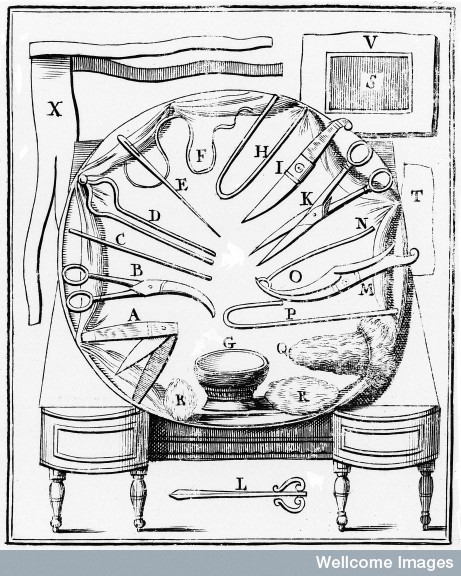I am currently reading the diary of Richard Kay a doctor in Lancashire born in 1716 and practicing medicine, with this father, in the 1740s (you can find out more about Richard and his family here). Kay’s diary is interesting for a number of reasons including the details he provides
A Famous Fistula
The Spanish Ambassador to James I of England suffered from an anal fistula which was common knowledge. John Reynolds’ imagined conversation between the late King Henry, Queen Anne, and Queens Mary and Elizabeth in 1624 includes the comment that Count Gondomar had the permission of King James to spend the
Medical Materials
A short while ago now I examined Alice Dolan’s excellent thesis on linen and its various roles in the life cycle. This got me thinking a bit more about the materials used in early modern medical recipes. We have seen these in various previous blog posts – like the hats
Dead Useful II: operating on the dead
Not too long ago I wrote a post about corpse medicine; the use of parts of the dead body in medicines. This could take the form of Stroking lumps and bumps with the hand of a hanged man, or including mummified flesh in a remedy. But dead bodies weren’t only used as
Surgical Spectators
As we saw in the last post John Evelyn’s Kalendarium contains many references to health and sickness, both his own and his family members. His diary entries, written after the event from notes, show that he had a keen interest in medical science throughout his life. When he was first


